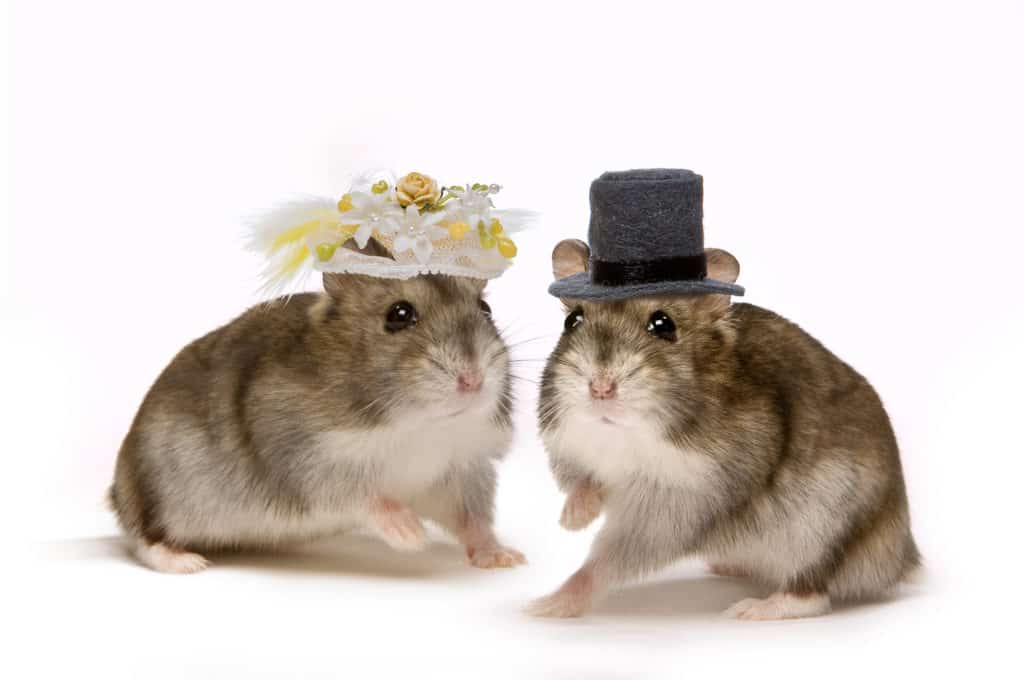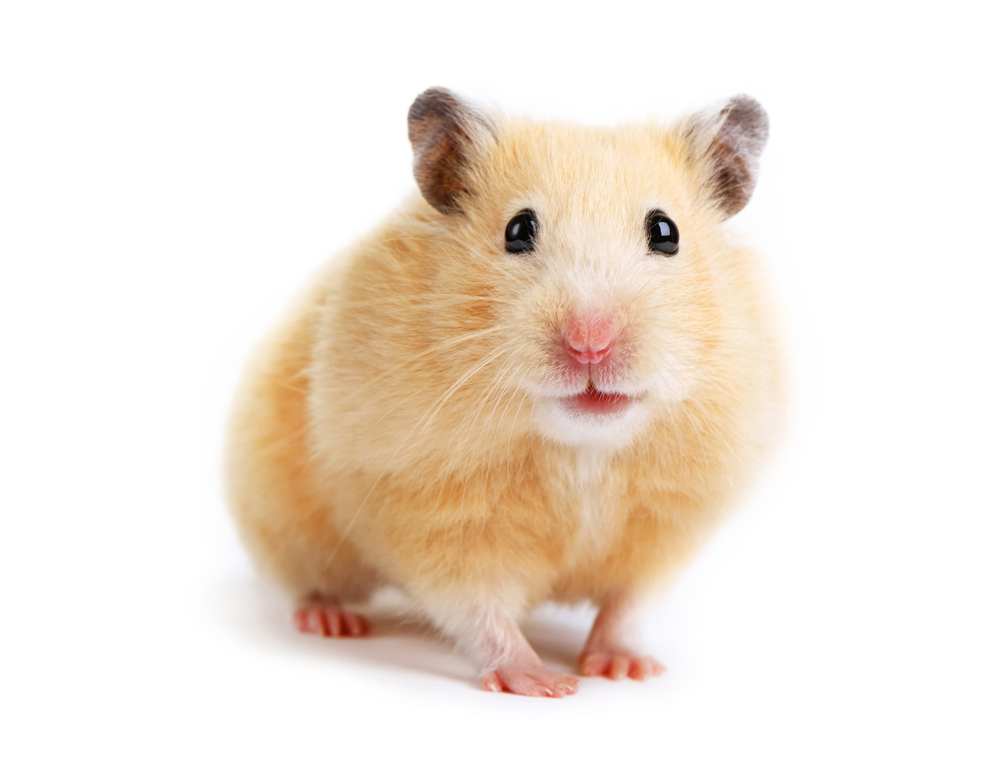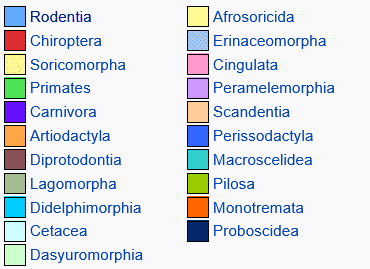If you want to own a pet but don’t want to take up a huge commitment, a hamster may be the right choice. Hamsters don’t need as much living space as a dog or a cat, and they certainly don’t need a lot of your time, money, and attention to stay healthy and happy. Yet, they are cute, can be friendly, and will definitely make your heart melt with just a look. So, it’s no wonder that hamsters have quickly become one of the most favorite small pets in the world.
But before you rush to a pet store and buy a hamster that looks cute, find out what a hamster is. Where does he come from? What does he eat? How does he live in a natural habitat? What can you do and cannot do as a hamster owner?
These are some of the things you must know before buying a hamster. But don’t worry. We have got you covered. You will find answers to all these questions in this blog post.
Rodents
If you don’t like biology and all the technical stuff that comes with it, feel free to skip this section. If not, keep reading, and we will find out how hamsters fit in the animal kingdom.
The entire animal kingdom can be divided into 9 different classes. Of these classes, hamsters (and humans) belong to the class called mammals. All mammals have some common characteristics: they give birth to their offspring, have mammary glands that produce milk for their offspring, are warm-blooded, have hair or fur, and their brains are much more complex than other animals.
Mammals can be divided further into several orders. Yet, a universally accepted classification system of mammals does not exist. So, different biologists classify mammals into different orders. But regardless of the classification system used, hamsters belong to the order called rodents.
Rodents are the most diverse order among mammals. About 40% of all mammal species are rodents (Source: Wikipedia). Rodents have learned to adapt to almost every environment. So, they are found everywhere except Antarctica.
Appearance
Rodents are small animals. Even though the largest rodent species can weigh up to 66kg, most rodents weigh less than 100g. They have small limbs, long tails, and are robust.
But their most striking feature is their razor-sharp incisors (front teeth) which keep growing until they die. So, they must wear them out regularly by gnawing food, creating burrows, etc. If they don’t do that, their incisors will grow and pierce their skull. Wearing out also makes their incisors very sharp.
Senses
Most rodents have excellent vision. Many nocturnal rodents even have enlarged eyes that help them see in the dark.
They also have excellent smelling abilities. So, they use their urine, feces, and secretions from their glands to mark territories and identify other individuals of their families.
Their hearing is top-notch. Many rodents can hear sounds that are too faint for the human ear to hear. Some rodents have even developed alarm calls to alert other members of the same species of danger.
Rodents possess advanced cognitive abilities as well. They can locate food using their spatial memory, learn to avoid baits to capture them, etc.
Food habits
Early rodents were mostly omnivorous. But today, most rodents have become herbivores. Only a few rodent species are still omnivores. But regardless of their food habits, most rodents have efficient digestive systems which help them absorb almost 80% of the ingested energy.
What is a hamster?
Hamsters are rodents. Like other rodents, their incisors continuously grow until they die. But they also have cheek pouches that extend to their shoulders, which many other rodents lack. Since hamsters are tiny creatures, they can be easily attacked by predators if they pause in the open forest to eat. So, they use their pouches to transport food to their burrows. Once they reach their burrows, they can eat the food in their cheek pouches or store the extra for later use.

Another major difference between hamsters and many other rodents is their short tail. Rodents generally have long tails. But hamsters and some other species like guinea pigs have very short (or no) tails.
Hamsters are neither diurnal (active during the day) nor nocturnal (active during the night). They are crepuscular (active during dusk and dawn). They mostly sleep throughout the day and take naps at night. In the wild, they dig burrows, where they live. They spend most of the day sleeping in the tunnels of their burrows and come out during sunset in search of food. This is the time they are most active.
History
Hamsters first evolved around 11.2 to 16.4 million years ago in Europe and North America. In Asia, their evolution traces back to 6 to 11 million years ago (Source: Wikipedia). Yet, their existence went unnoticed by humans for a very long time.
Only in 1797 were they first sighted by a physician called Alexander Russell (Source: National Geographic). The hamster he spotted was a Syrian hamster, which he found in the city of Aleppo in Syria. He described these creatures in a journal called The Natural History of Aleppo but didn’t give them a name. Then, four decades later, in 1839, the British zoologist George Robert Waterhouse named them Mesocricetus auratus, which meant golden hair (Source: Omlet US). That is why Syrian hamsters are still sometimes called golden hamsters.
But after being discovered, Syrian hamsters were not sighted for nearly a century. So, many people thought that they had gone extinct.
When and how were hamsters first domesticated?
In 1930, Israel Aharoni, a Jewish biologist, put himself up on the mission to find the Syrian hamsters.
But Israel was a person who sucked at traveling. He worried about the most insignificant things, like the weather, transportation, etc., and hated when his stay got the least bit uncomfortable. Yet, despite his reluctance to travel, he had two reasons to pursue this mission. The first reason was that he wanted to immortalize himself in history by doing something that nobody could do. The second reason was that his colleague thought that this creature was similar to human beings and hence, could be used in medical labs to find a cure for leishmaniasis, a common disease in that region (Source: Smithsonian magazine).
At that time, another breed of hamsters (Chinese hamsters) was already being used for medical research in China. The Chinese had successfully domesticated those hamsters several years earlier, in 1919 (Source: National Hamster Council, UK). But they couldn’t get them to reproduce in captivity. So, every time they needed a hamster, they had to capture one from the wild. But Israel thought he could succeed where the Chinese had failed. He believed that he could not only capture hamsters but also get them to breed in captivity.
So, with the help of a local hunter called Georius Khalil Tah’an, he started searching for Syrian hamsters. They knocked door to door, asking the local people if they had seen any hamsters. Finally, one day, luck found them. They found out that the local people had seen a hamster on a nearby farm. So, Israel and Khalil went to the farm and started digging. After digging eight feed, a nest became visible. Inside it, they found a mother hamster and her 11 babies.
Israel was thrilled and decided to take these animals to his lab in Jerusalem. So, he placed the little animals in a box. But once inside the box, the mother hamster ate a baby. So, he had to kill the mother. Then, during transportation, one of the babies escaped. So, by the time he reached Jerusalem, he had only nine hamster babies left. Of these, five escaped one night, and he had only four left – a male and three females. One day, the male hamster ate a female. So, he separated the remaining hamsters – one male and two females. But when he reintroduced a female to the male after a short period of separation, they mated.
That single brother and sister made more than 150 babies, which made even more babies. Today, Syrian hamsters are found in millions of households as pets. But the ancestors of all these pet hamsters were that single brother-sister duo, whom Israel got to mate in the 1930s.
Senses
Rodents generally have excellent senses of smell, vision, and sound. But even though hamsters are rodents, they have very poor eyesight. They may have big eyes to help them see at dusk and dawn when they are the most active. But they are near-sighted and colorblind. They can’t see more than a few inches past their nose. So, hamsters are very bad at judging distances and depth. Therefore, you should never let your hamster walk on the edge of a table because your hamster wouldn’t be able to judge how tall the table is. As a result, he might fall down and hurt himself.
But a hamster makes up for his terrible vision with his very good senses of smell, sound, and touch. In the wild, hamsters live in burrows. Burrows are normally dark, so having good eyesight (unless it helps see in the dark) wouldn’t help anyway. Therefore, hamsters have evolved to use their whiskers and feet to sense their surroundings.
They can also sense movements and vibrations very well. Wild hamsters turn upside down and lay on their back when they sense movement. In that position, they can use their feet and teeth for attacking when endangered. It helps protect them from predators like birds. But pet hamsters don’t have to be wary of any predators. So, they learn to use their ability to detect movements to figure out when their owner is going to hold them.
Hamsters also have a keen sense of smell. They can smell food items once you open the fridge door (Source: Omlet UK). Their keen sense of smell also helps them identify places and other individuals.
Hamsters have scent glands on their bodies. So, they leave scent traces by rubbing their bodies against objects. Then they use this scent to find their way back to their burrows. This scent also helps hamsters mark and identify their territories and mates. Female hamsters can use it to identify their babies as well.
Hamsters can hear sounds that the human ear cannot. So, they can hear even the faintest of sounds. Wild hamsters use their strong hearing ability to figure out when a predator is going to attack them. On the forest floor, even a wild animal moving stealthily would create small noises. These noises are enough to alert a hamster and make him run away.
Hamsters have advanced cognitive abilities as well. So, pet hamsters can quickly learn to associate certain sounds with certain events. For example, a metal clank would tell them that you’re going to bring them food, the sound of your voice would tell them that you’re going to hold them, etc.
Food habits
Hamsters are omnivores. Wild hamsters survive mostly on seeds and grass. Occasionally, they might eat small insects as well. When it comes to pet hamsters, however, the commercial hamster food available in pet stores is enough to take care of their nutritional requirements. But you can also give them fruits, vegetables, seeds, and nuts. It not only adds variety to their diet but also keeps them healthy. But you shouldn’t let them overeat because their small size makes them vulnerable to obesity and diabetes.
Social behavior
Most varieties of hamsters are solitary creatures. When you keep two or more hamsters in the same cage, they may become stressed. They could eventually end up fighting and killing each other. In some hamster species, the female could become hostile against the male and attack him if kept in the same cage for too long after mating. In extreme cases, she could even attack the male hamster and kill him.
What is a hamster’s life span?
There are several breeds of hamsters. The size and lifecycle of a hamster depend on the breed.
A hamster’s gestation period could last from 15 to 30 days, depending on the breed. A female hamster could give birth to up to 24 pups at a time.
The baby hamsters are born blind. They remain blind until they are two weeks old. Then, their eyesight starts to develop.
By the time they are three to four weeks old, they stop drinking their mother’s milk.
Hamsters become mature when they are 5 to 12 weeks old. An adult hamster can be 2 to 14 inches in length and can weigh anywhere between 25 and 459g (Source: Hamsters101). A pet hamster could live up to three years when cared for properly.
Keeping a hamster as a pet – Some Dos and Don’ts
Keeping a hamster as a pet might seem like a great idea at first. But as Uncle Ben tells Peter in the Spiderman movie, “With great power comes great responsibility.”
Here are some Dos to be a responsible hamster owner:
- Buy a good-quality hamster cage for your furry friend.
- Buy a hamster wheel or hamster ball as it helps your pet remain active and stay healthy.
- Get proper health insurance for your hamster.
- Take your hamster for regular health check-ups.
- Hamsters are prone to several health issues if you don’t keep their surroundings clean. So, clean your hamster’s cage regularly.
- As hamsters are small creatures, overeating or eating the wrong food could lead to several health concerns. So, inform yourself about what your hamster can and cannot eat, and also how much of each food item he can eat, before you rush to the supermarket and buy a treat for your little friend. Spoiler alert: Our Hamster guide can help you with this. Check it out here -> Smallpetgenie’s hamster guide.
And then, there are some Don’ts:
- Try not to scare your hamster. Unintentionally scaring them once in a while is not bad, but if you do it constantly, it might stress your hamster out and affect his health.
- Building upon the above point, if you want to hold your hamster, approach from his front very slowly. Hamsters can see only for a few inches, and if you approach suddenly to hold them, they might get scared and get defensive. After all, hamsters are prey animals, and this instinct helps them survive.
- Some hamsters, like dwarf hamsters, hate being held. So, you must approach them very cautiously or avoid holding them at all.
- Most hamster breeds are not appropriate for children to handle. Moreover, since they are active only after sunset, they may be noisy when your child falls asleep. So, keeping a hamster cage in your child’s room may not be a good decision.
- Most hamsters are highly territorial and solitary creatures. So, they do not appreciate sharing their cage with other hamsters. Therefore, you should never put two or more hamsters in the same cage.
- Hamsters sleep throughout the day and take some naps during the night as well. They need to sleep properly to stay healthy. So, don’t wake your hamster. Waking once in a while is okay, but if you do it constantly, it might affect your hamster’s health.
If you have reached this part of the blog post, then you might have learned quite a bit about hamsters. Hopefully, this blog post helped you decide if you want to buy/adopt a hamster or not. If you have indeed decided to get a hamster and would like to know which type of hamster would suit you the most, read our next blog post.




